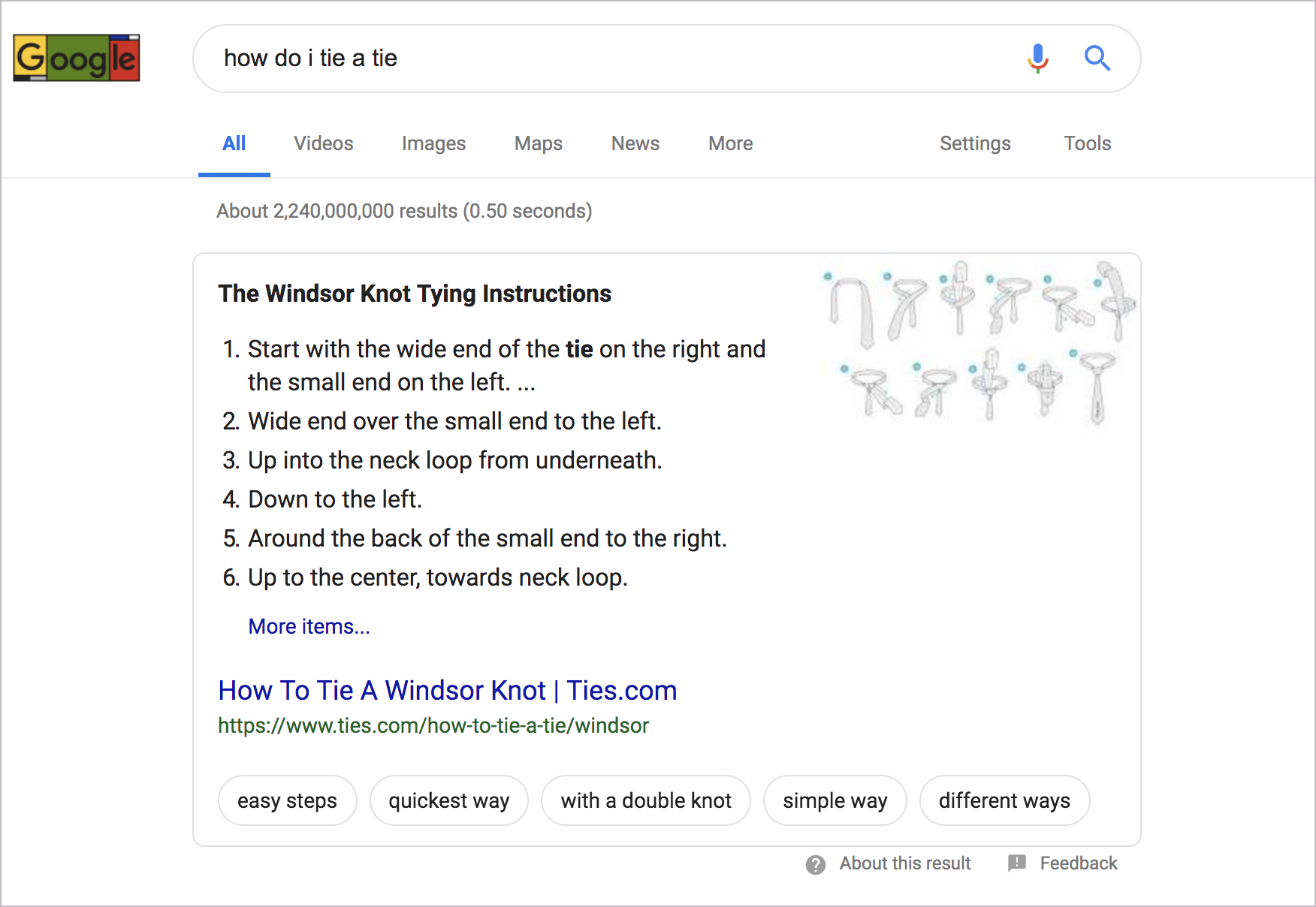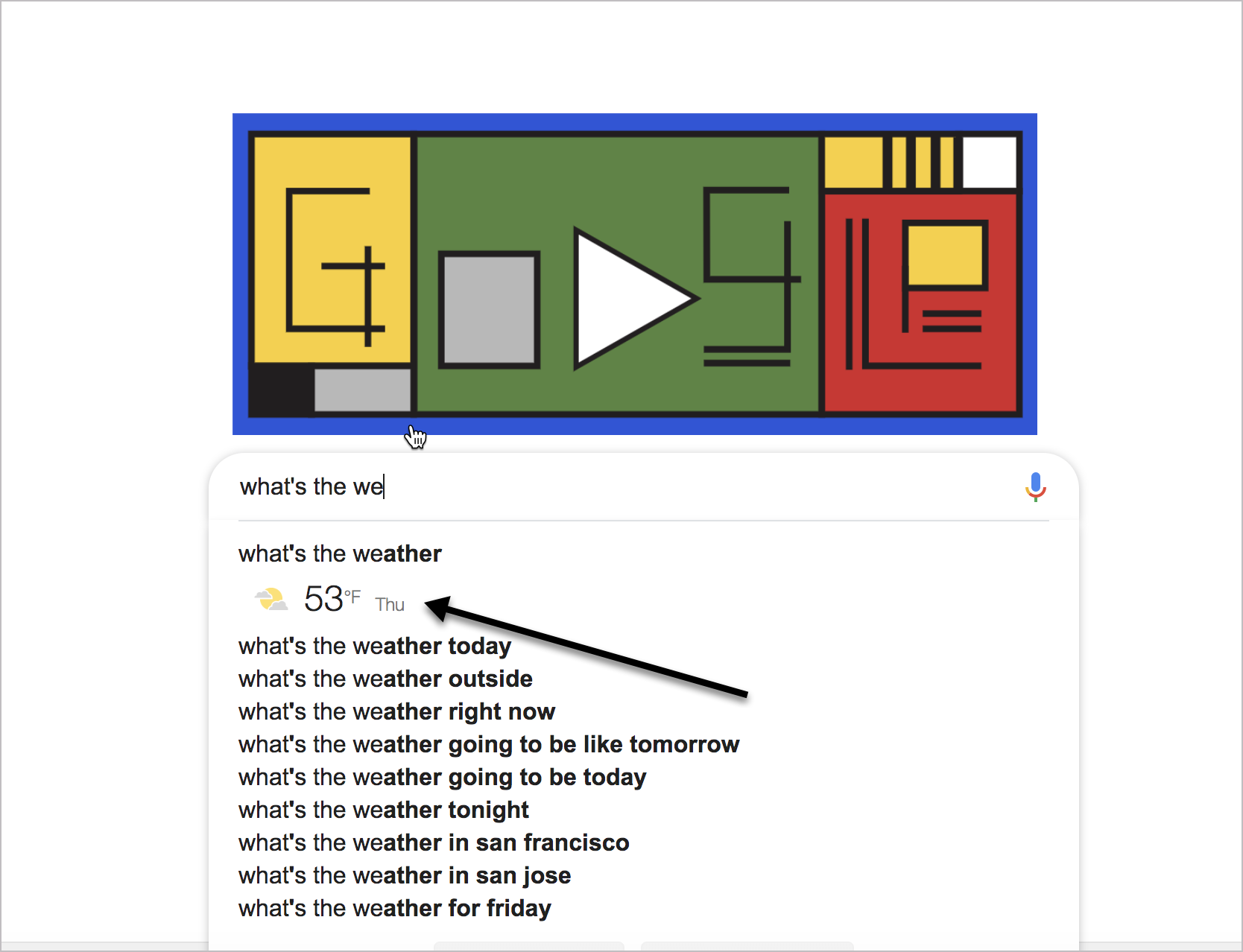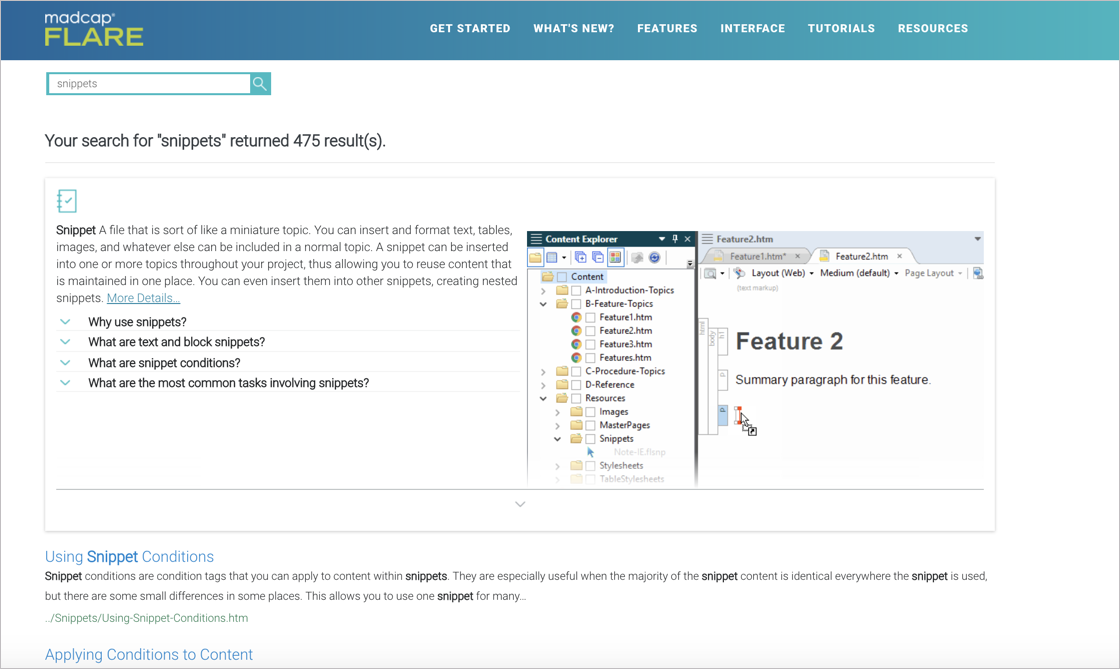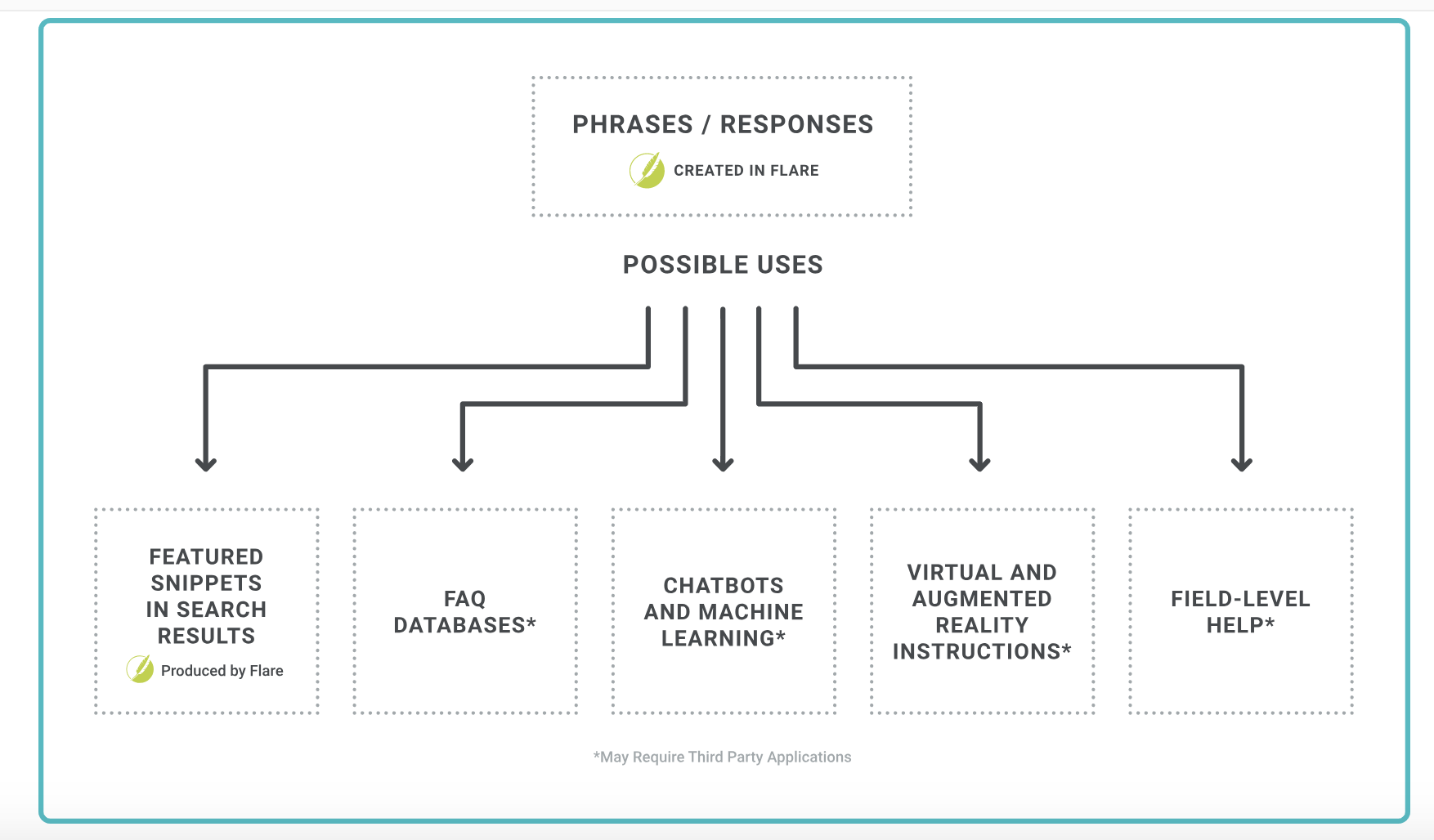Flare adds micro content feature, taking steps toward content management for AI scenarios
Note: MadCap Software is one of the sponsors of my blog.
About micro content
In my last newsletter, I noted that Flare’s recent 2019 release gives you the ability to create micro content, but I didn’t explain much about micro content. The direction towards micro content is actually an interesting feature and speaks to trends toward artificial intelligence (AI). MadCap writes,
The future of content involves AI, machine learning and other technologies that allow for the intelligent flow of information. Only MadCap Flare gives you the ability to go beyond topic-based authoring with built-in micro content authoring. You can now create new machine and AI-ready micro content directly in the Micro Content Editor, or repurpose your existing content, such as a topic or snippet, for use as micro content. (New Release: MadCap Flare 2019 Now Available”)
In other words, micro content has many uses geared towards AI situations. Consider chatbots, for example. Chatbots often consist of micro content — you type a question and see a one paragraph response in the chatbot. I wrote more about chatbots and the need for micro content in “Chatbots and decoupled information” within a larger essay on making information discoverable as the user needs it.
Micro content is being integrated into other devices too. In the Internet of Things, more and more devices are going online and becoming voice-enabled. Whether you’re talking to your TV, car, clock, microwave, radio, refrigerator, or other device, we’re moving towards a world where everything is online and voice interactive. These voice interactions are driven by micro content.
In fact, although the exact definition of micro content varies (some people use it to refer to short-form content as well, like tweets or sidebar text ads), Mike Hamilton defines micro content by saying that it is content that fits into the context of a “micro moment.” For example, if you want to quickly know the weather to decide whether to put on a jacket, you grab your phone and open the weather app. The info that appears to you provides a short answer to your question. For more on micro contents and micro moments, listen to this excellent podcast episode from Cherryleaf: 56. Microcontent in Flare - conversation with Mike Hamilton.
Micro content in search results pages
Another common instance of micro content is the search results page. If you search google for how do i tie a tie, you don’t have to click through links on the search results page to view the content. Instead, Google’s algorithm identifies the answer from the search results and excerpts that answer as micro content directly in the search result:

This reduces the number of clicks users have to proceed through to get answers to their questions. Other micro content appears directly in the search box as you type.

Part of Google’s genius is in figuring out how to identify and surface micro content in search results pages. With Flare, you can now leverage similar features in your own help files. If you go to the Flare help and search for “snippet”, you’ll see some micro content about snippets appear directly in Madcap’s search results:

You can even include animated gifs and other graphics in the micro content.
Chatbots and search-engine results pages are just a couple of uses for micro content. MadCap identifies about half a dozen uses for micro content:

You can learn more about micro content in Flare here: About Micro Content.
Although you could probably use a lot of different tools to create micro content, Flare takes content management to another level, allowing you to use variables and conditions in your micro content. The text you use in micro content can be re-used in other topics, allowing you to use micro content in a much more efficient, strategic way. For more info, see MadCap Flare 2019 release.
Your reactions and input
I have a short survey to gauge your reactions and input from this post. You can see the ongoing results here.
About Tom Johnson

I'm an API technical writer based in the Seattle area. On this blog, I write about topics related to technical writing and communication — such as software documentation, API documentation, AI, information architecture, content strategy, writing processes, plain language, tech comm careers, and more. Check out my API documentation course if you're looking for more info about documenting APIs. Or see my posts on AI and AI course section for more on the latest in AI and tech comm.
If you're a technical writer and want to keep on top of the latest trends in the tech comm, be sure to subscribe to email updates below. You can also learn more about me or contact me. Finally, note that the opinions I express on my blog are my own points of view, not that of my employer.
